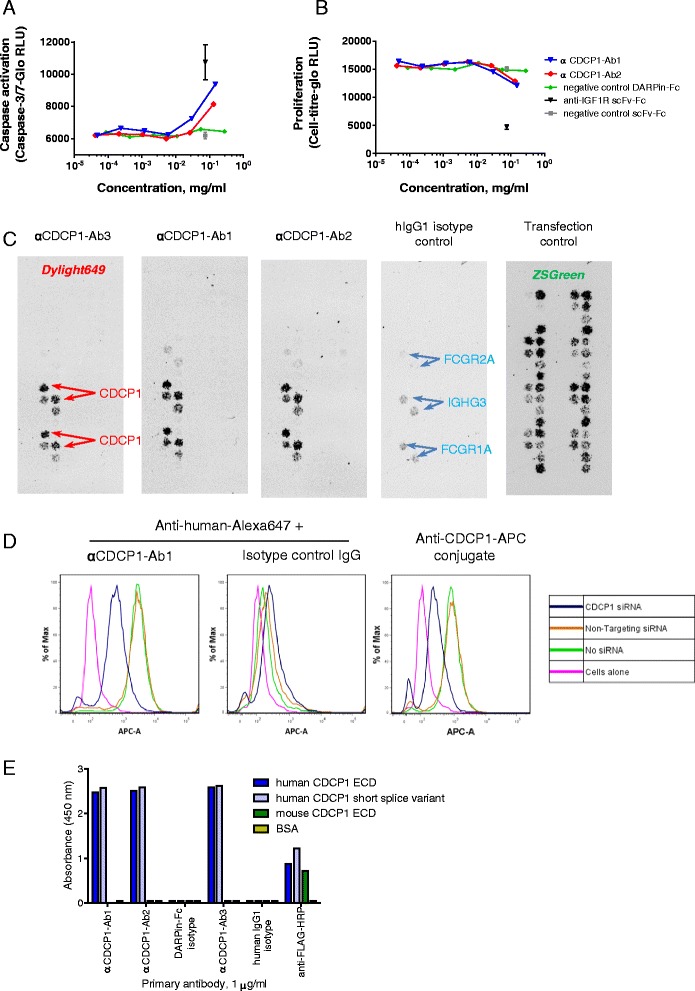Fig. 2.

Identification of CDCP1-binding antibodies with activity against NSCLC tumour cells. a + b Dose-dependent activity of two antibodies that induced caspase 3/7 activation and inhibited proliferation in primary NSCLC tumour #1 cells grown as spheroids. c CDCP1 was identified as the antigen of the two antibodies shown in (a/b), and also of the antibody indicated in orange in Fig. 1c. Target ID was performed using cell-surface display of a human membrane protein cDNA array in HEK293 monolayers. Array positions were determined using zsGreen encoded within the cDNA library vector. Antibody binding was detected via a Dylight649-labelled secondary antibody. d siRNA knockdown of CDCP1 in NCI-H358 cells reduced the binding of αCDCP1-Ab1 (and αCDCP1-Ab2–see Additional file 3: Figure S3A), and of positive control anti-CDCP1 antibody (clone 309121-APC conjugate), as determined by flow cytometry. e The anti-CDCP1 antibodies identified in Fig. 2c all recognise the N-terminal region of CDCP1 that is shared by both splice variants, shown by direct ELISA on FLAG-His10-tagged recombinant antigens. The antibodies are not crossreactive to mouse CDCP1
